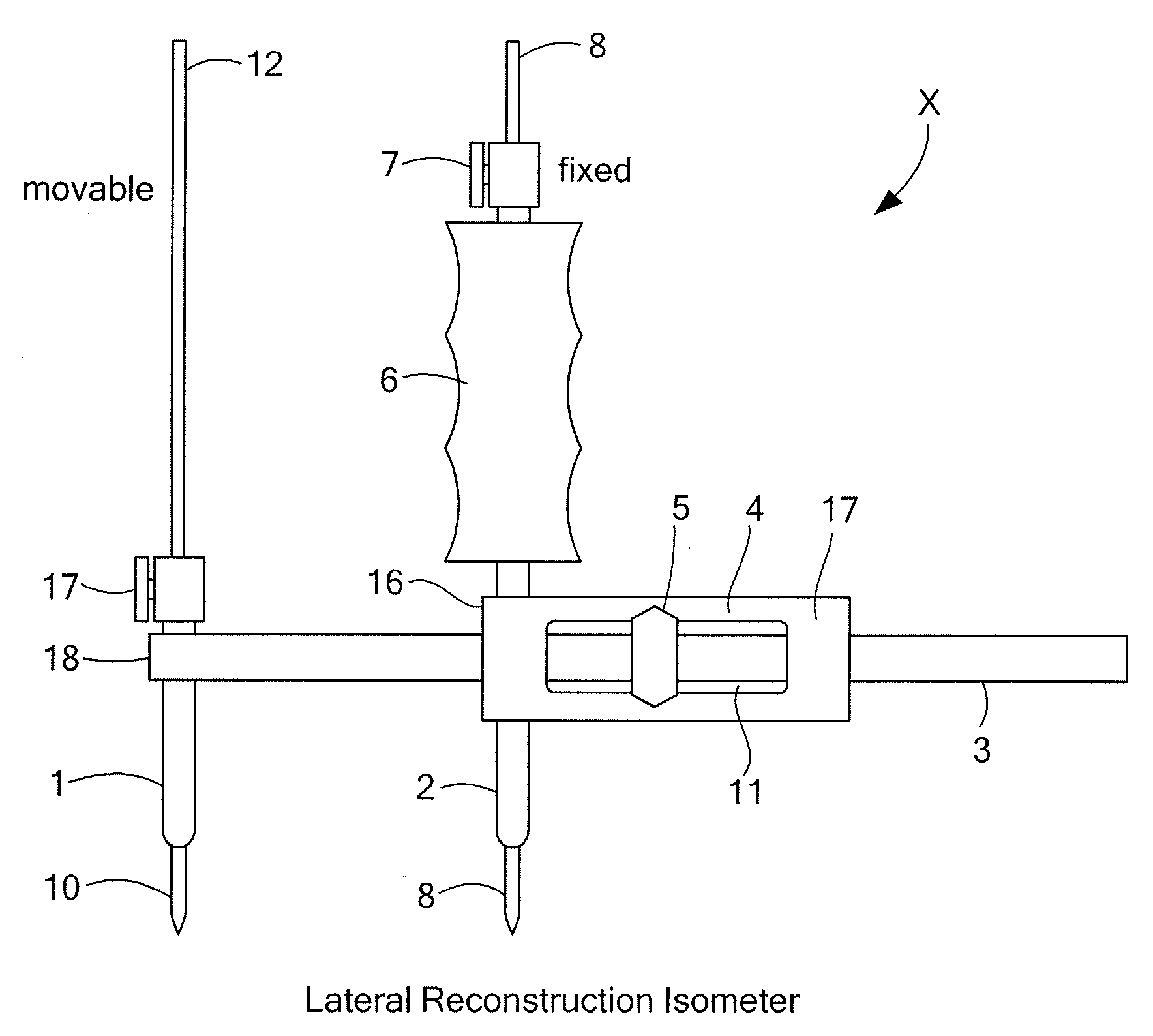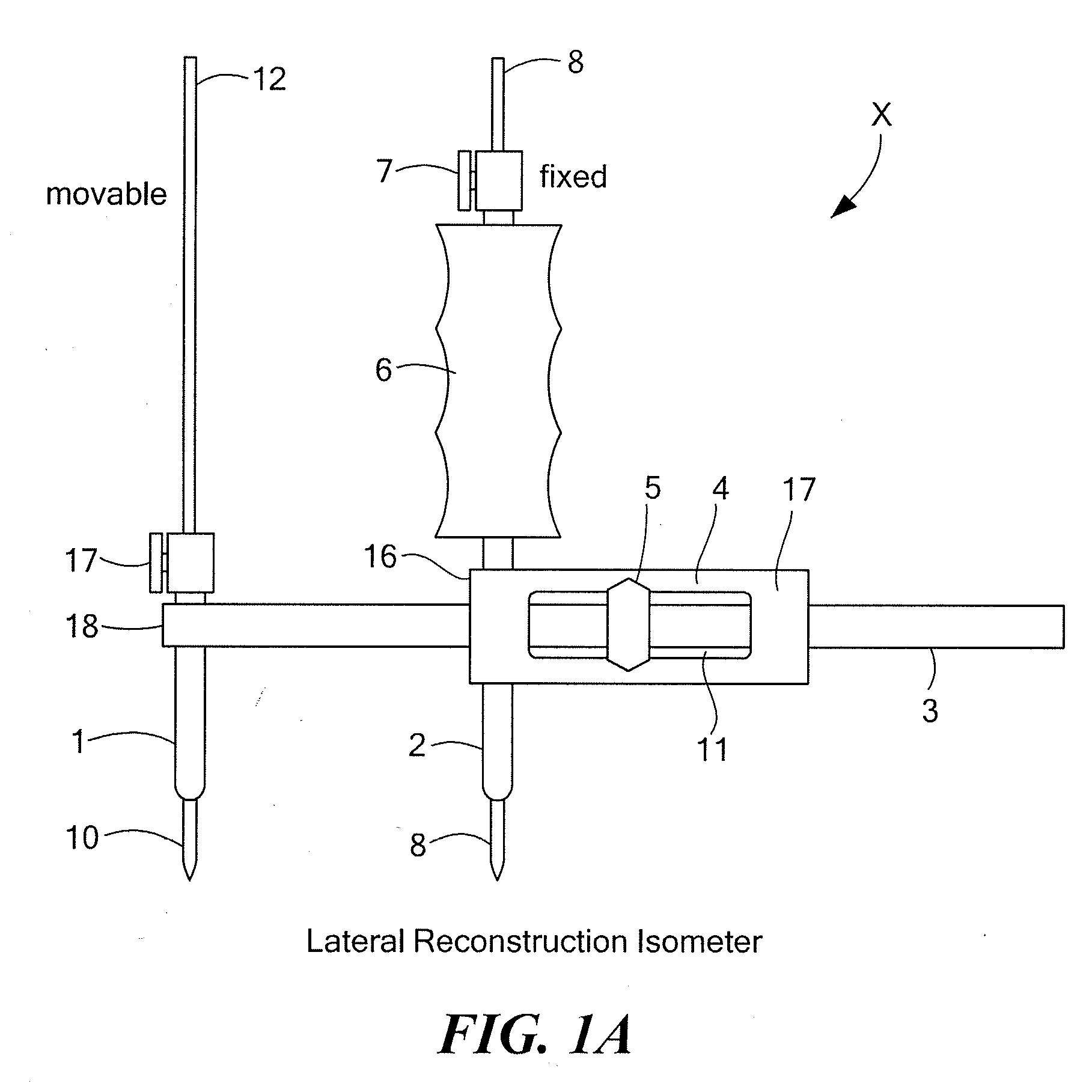Surgical Device for Anterolateral and Posterolateral Reconstruction
- Summary
- Abstract
- Description
- Claims
- Application Information
AI Technical Summary
Benefits of technology
Problems solved by technology
Method used
Image
Examples
Embodiment Construction
[0038] Referring now to FIG. 1, an isometer X having an elongated cannulated body 4, having a first end 16 and a second end 17, that encases a slider rod 3 with a pointer 5, further having a fixed stylus 2 and corresponding guide pin 8, and a movable stylus 1 and corresponding guide pin 10, is designed for use in determining lateral isometry for restoring rotary and anterior and / or posterior knee stability in combination with ACL and / or PCL reconstruction.
[0039] The slider rod 3 has a first end 18 and second end 19 and a longitudinal slot 20 (see FIG. 3A for slot 20) running part of the length of the rod, and slides horizontally within the hollow elongated body 4. There is also a hole 21 (see FIG. 3B) in first end 18 wherein the movable-stylus guide pin 10 slides vertically within the cannulated movable stylus 1, and is attached transversely through the first end 18 of the slider rod 3. Encircling the slider rod 3 is a pointer 5 that slides with the slider rod 3 but whose position ...
PUM
 Login to View More
Login to View More Abstract
Description
Claims
Application Information
 Login to View More
Login to View More - R&D
- Intellectual Property
- Life Sciences
- Materials
- Tech Scout
- Unparalleled Data Quality
- Higher Quality Content
- 60% Fewer Hallucinations
Browse by: Latest US Patents, China's latest patents, Technical Efficacy Thesaurus, Application Domain, Technology Topic, Popular Technical Reports.
© 2025 PatSnap. All rights reserved.Legal|Privacy policy|Modern Slavery Act Transparency Statement|Sitemap|About US| Contact US: help@patsnap.com



